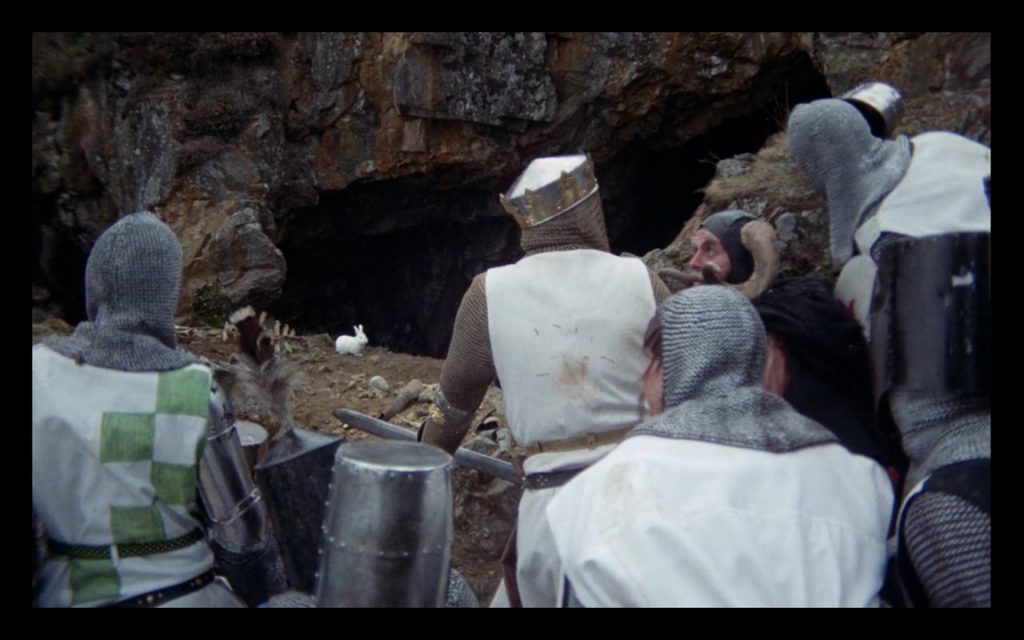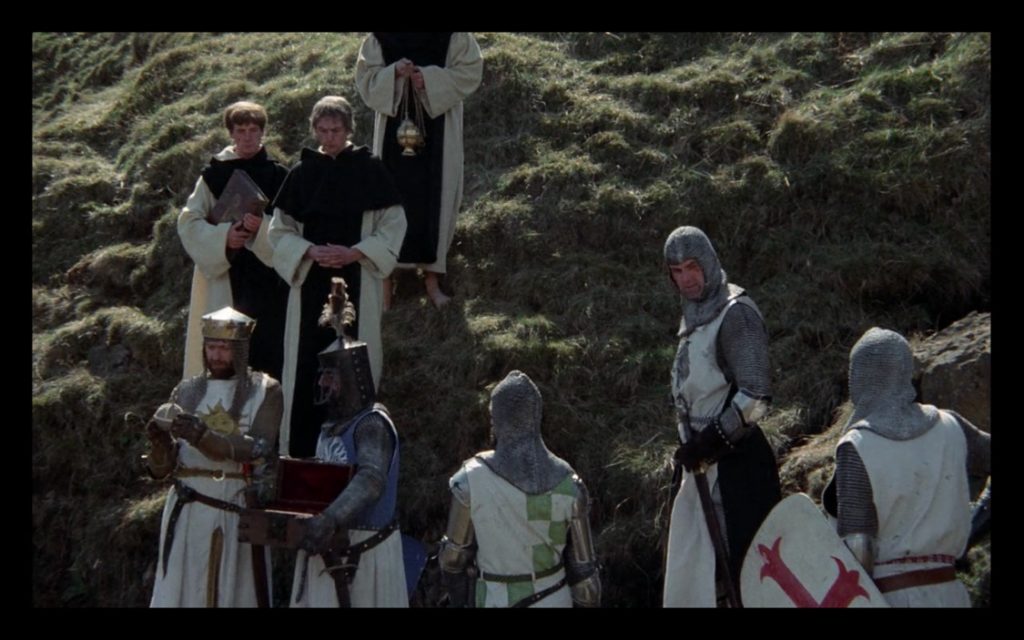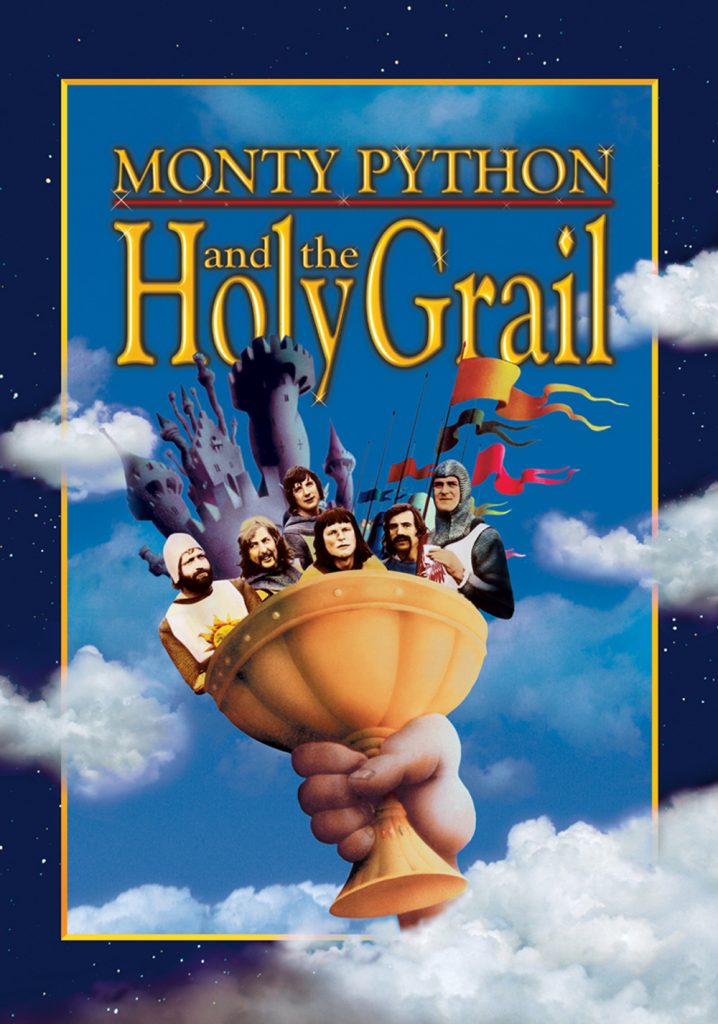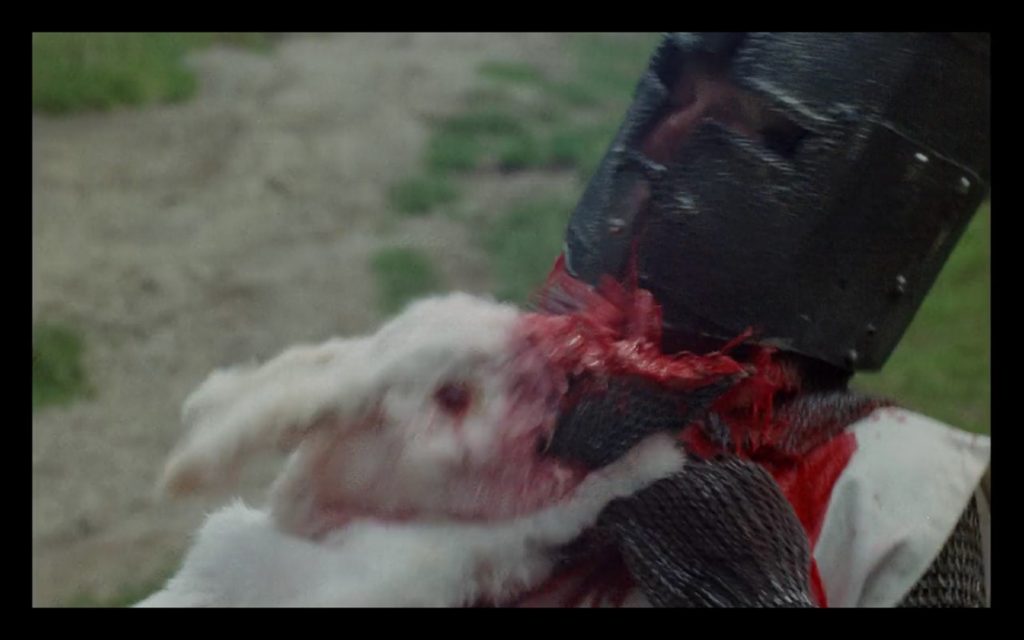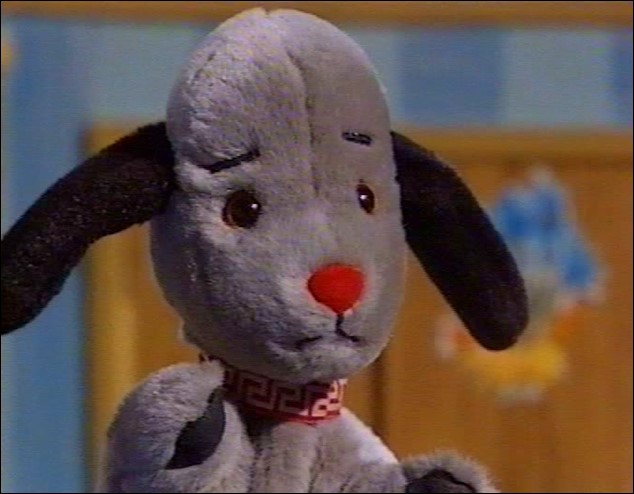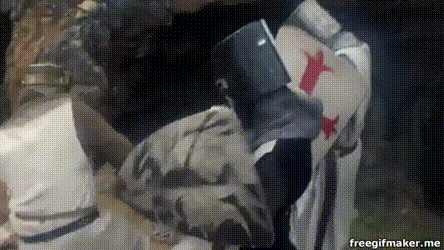This iconic scene fully exemplifies the film’s absurdist representation of the violence of the crusades, particularly the disproportionate violence of the Western invaders. It explores this using the similarly lopsided power-dynamic of the animal-human relationship, the surreal treatment of which exposes the arbitrary hegemony, and divine mission of the white Christian crusaders as a lie. In the scene, a white rabbit appears in the front of The Cave of Caerbannog as the Knights look on.
The scene uses an over-the-shoulder shot with the Knights of the Round Table foregrounded and the rabbit in the distance. The rabbit is shown as much smaller than the Knights, in proportion to the implied (in terms of Western mythology and the bias of Western historical representations) power and status of Arthur and his Knights. Furthermore, the religious iconography on the clothing the Knights wear, e.g. the St. George Cross on their tabards and shields, ties this implied power to that of the Catholic Church, given that several Popes sanctioned these holy wars.
The ‘Holy Hand Grenade’, which is used to kill the rabbit, being ‘of Antioch’ (a Syrian town captured in The Crusades) also provides evidence that the reliance on technological superiority of the Western invaders is what is being parodied here. Despite the many knights it kills, it is an absurdly over the top method of dispatching one rabbit. That the rabbit literally stands between the European invaders and their crusade for the Holy Grail, shows that it can ultimately only be destroyed by using their own resources (i.e. the relic, which the crusaders took from them) against them.
The rabbit is initially considered harmless, and fighting it is considered beneath their dignity. King Arthur sends one of the lesser knights to despatch the rabbit, who says, ‘silly little bleeder. One rabbit stew coming right up.’ The rabbit is therefore simultaneously seen as both a pest, a food source, and in its visual representation at least, as something domesticated and harmless. It is therefore easy to see how the image of the rabbit as both lesser being and resource is analogous to the treatment of Muslims in the Crusades. However just as in the Crusades, the animal has considerably more agency and fight than anticipated.
The rabbit during the fight scenes has clearly been substituted with a bloodied puppet, and the filmmaker makes no attempt to hide this with production effects. To further the sense of derision aimed at the Catholic church the rabbit flies around from victim to victim on a wire, and it is given a squeaky voice, very similar to that which is used by Sweep on The Sooty Show.
Again, this lampshades [1] its on-screen representation by a puppet. This bizarre pinging around is juxtaposed with visceral close-up POV shots from both the rabbit and its victims’ perspective: it is a mixture of horror and comic genre tropes. The use of handheld camera in the midst of the violence also supports this mock-horror sensibility. This surreal and comic contrast of modes is intended to humiliate the arrogant and foolish Crusaders as representatives of the Catholic Church.
[1] https://tvtropes.org/pmwiki/pmwiki.php/Main/LampshadeHanging
